Globalization, in its most general sense, refers to the growing interdependence of the world’s economies and cultures. People often think of huge global brands like Coca-Cola and ‘made in China’ products whenever globalization comes to mind.
But globalization isn’t really a modern phenomenon. Some argue that it first really started to gain steam during Genghis Khan’s invasions or as a result of huge trading networks like the Silk Road. It’s all a matter of debate of course, but if there’s one commodity that encapsulates the essence of globalization, that would have to be food.
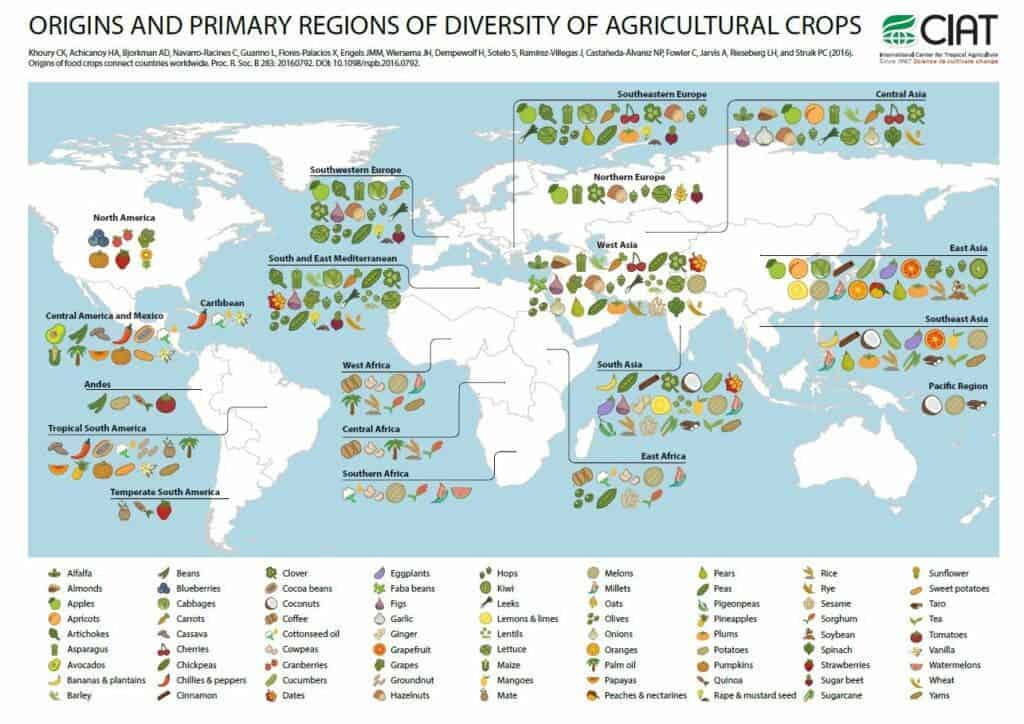
Most of the food you put on the dinner table isn’t exactly local. I’m not referring to the actual physical products found in the supermarket or in your cupboard, but the actual species of plant or animal from which the food is sourced.
According to a 2021 study, close to 69% of the global diet consists of foreign crops, meaning the plants were initially domesticated and evolved over long periods of time in a completely different region of the world.
For instance, North America gave us pumpkins, sunflowers, blueberries, and cranberries. We have native South Americans to thank for the groundwork domesticating potatoes, tomatoes, pineapples, and everyone’s favorite sweet, cocoa. Rice, watermelon, and coffee come from Africa, while Asia is the bread basket for a number of important vegetables and fruit, such as peaches and mandarins, cucumbers, hemp, spinach, and eggplants. And the old continent of Europe produced its fair share of delicious crops, including apples, walnuts, cherries, and hops.
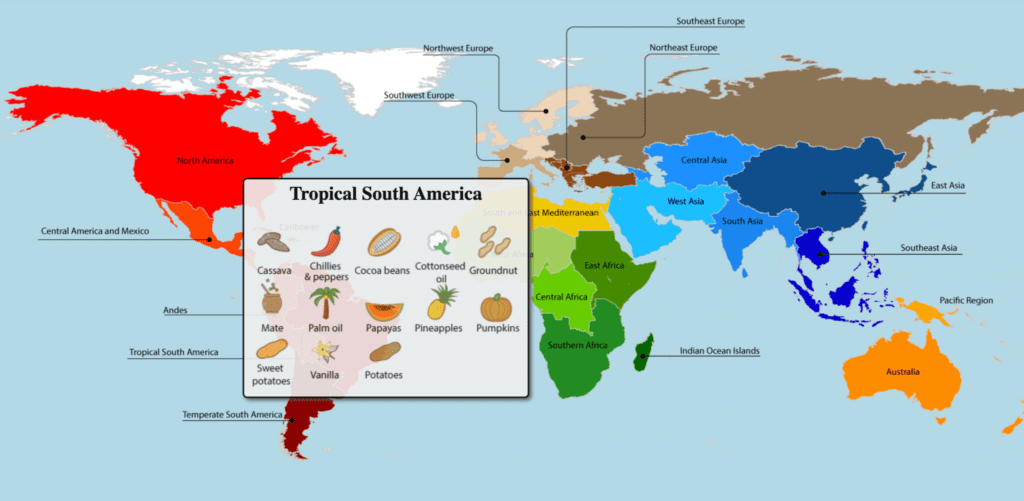
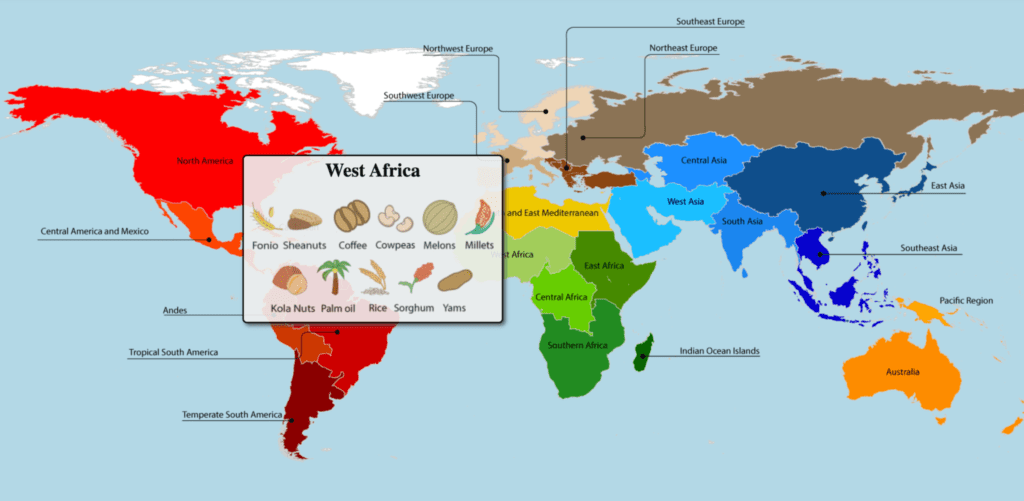
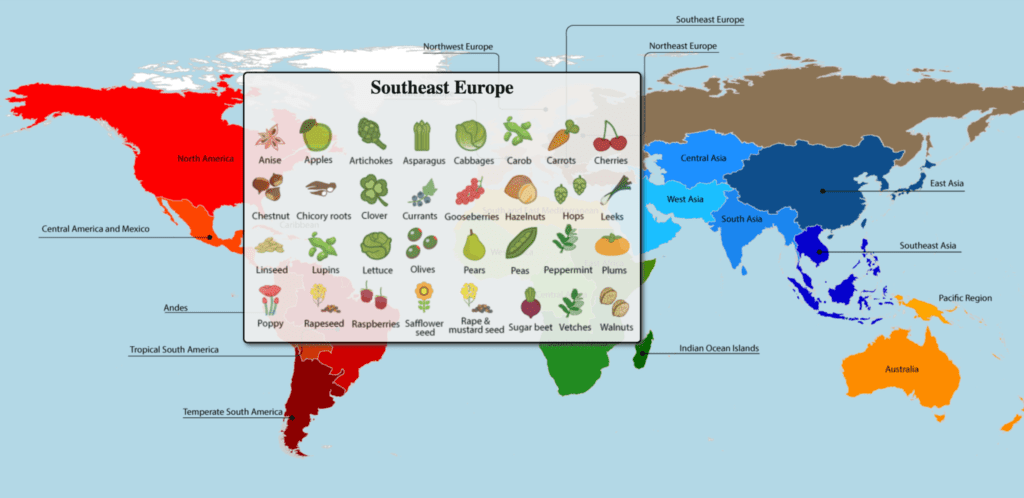
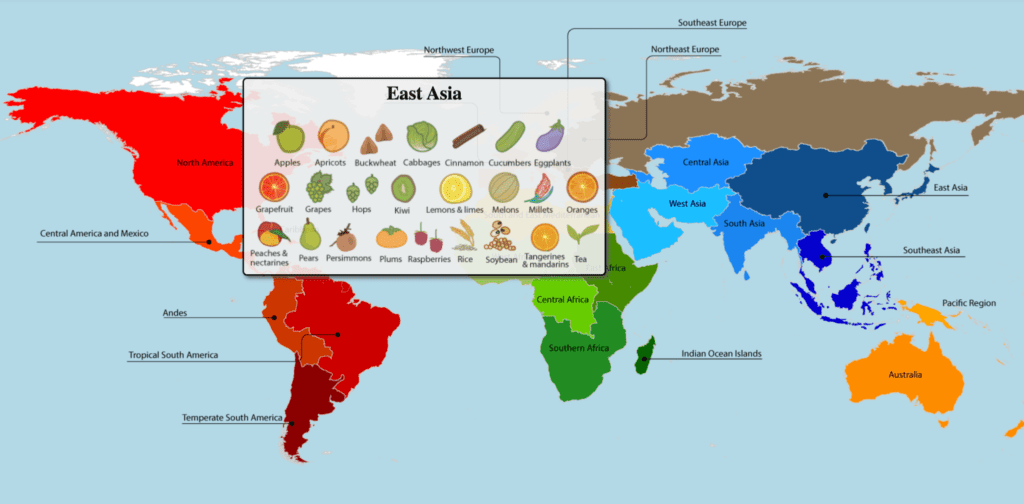
Whenever people from distant regions of the world traded, they also exchanged new seeds and agricultural knowledge. For most of human history, most of the world’s population lived with famine so whenever a new type of food crop was introduced from elsewhere, experiments quickly commenced in order to see whether the local soil and climate were accommodating.
The Columbian Exchange is illustrative in this regard since it arguably saw the greatest number of new crops exchanged over a given period of time. Not long after 1492, Old World crops such as wheat, barley, rice, and turnips made their way across the Atlantic, while New World crops such as maize, white potatoes, sweet potatoes, and manioc were quickly embraced in Europe.
Thanks to this amazing map, which was compiled by researchers at the International Center for Tropical Agriculture (CIAT), we can now easily see how each region of the world contributed a staple crop to the global diet and the direction of this contribution.
The map pinpoints the origin of 151 of today’s staple food crops and the accompanying study provides some interesting insights into how we source and consume our food. For instance, the researchers found that regions that are far away from important centers of origin for food crops were the most dependent on foreign crops. Canadians, for instance, source 92.5% of their calories from outside North America.
Researchers also analyzed data on food production provided by the Food and Agriculture Organization, revealing that crops that produced fat saw the fastest growth since the 1960s. A prime example is the oil palm boom in Indonesia and Malaysia. In the U.S., the most popular crops are foreign, with soybeans coming from East Asia and maize from Central America, while most crops intended for food — wheat, barley, chickpea, and almonds — come from Europe and West Asia.
“Foreign crop usage has increased significantly over the past 50 years, including in countries with high indigenous crop diversity. The results provide a novel perspective on the ongoing globalization of food systems worldwide, and bolster evidence for the importance of international collaboration on genetic resource conservation and exchange,” the authors wrote in the Proceedings of the Royal Society B.
According to Big Think, the map and underlying research build on the groundwork laid by Soviet geneticist Nikolai Vavilov, who traveled the world in the 1920s in order to collect crop samples from as close as possible to their origin of domestication. He eventually amassed an impressive sample bank consisting of over 250,000 seeds, roots, and fruits. Unfortunately, Vavilov was part of the intellectual elite that was purged by Stalin and was sent to prison in 1940, where he died just three years later.
The researchers have launched a website where you can explore the origin of all these plants and their relationship with various regions across the globe, including an interactive map for each continent. You can also see how much of each region’s diets include foreign plants.


